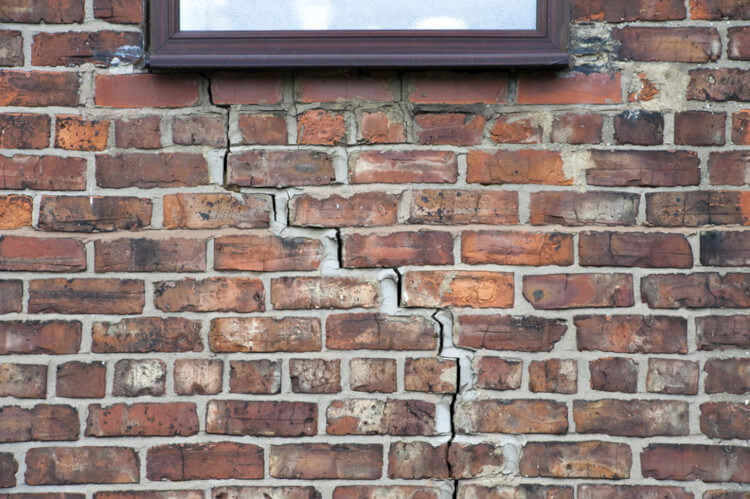
This article is for general information only and is not intended as advice. Each property has its own set of unique circumstances, and all potential issues with regard to cracking should be investigated by a surveyor on a case-by-case basis before making any decision.
Whether you are buying your next home or a buy-to-let investment, knowing that the building is in good condition is key. If there are walls that have cracks in them, would you know if this is a minor nuisance that’s easily fixable, or a major structural problem that could impact the property’s value?
At Cosey Homes, our RICS Building Survey (Level 3) and Specific Structural Inspections are designed to check all visible building elements and deliver comprehensive professional advice, so that homebuyers can make informed purchase decisions based on fact. Minor surface cracks are usually nothing to worry about. However, wall cracks that are the result of structural movement are a whole different story.
We should start by pointing out that finding cracks in the wall is not at all unusual. In fact, most properties have them at some point. Cracking can occur naturally as a result of the settlement, for example in the following scenarios:
Superficial cracks and hairline cracks, such as the ones mentioned above, can generally be remedied with straightforward painting and decorating. Larger cracks, however, could be a sign of subsidence or heave, which are major structural movements that can do real damage to the property’s foundations. This could be due to a number of factors:
If you are concerned that there are serious cracks in your property, a good place to start is by getting the tape measure out. Generally speaking, cracks that are wider than 15mm, or that appear suddenly, should be investigated without delay by a surveyor or structural engineer who will categorise them as follows:
Negligible: Hairline cracks under 1mm wide can be easily dealt with by redecorating
Slight: 1-5mm wide cracks can be rectified with interior filler or external repointing
Moderate: 5-15mm wide cracks may need professional building work
Severe: Large cracks up to 25mm may indicate structural damage and should be inspected by a professional urgently
Very Severe: Cracks wider than 25mm are typically a sign of major structural damage and may need underpinning and rebuilding. Seek professional help at once.
Another telltale sign of subsidence cracks is that they tend to run diagonally across a wall and are typically wider at the top and taper in at the bottom. Take a careful look, particularly around doors and windows. Large vertical cracks are another obvious sign that may indicate structural movement.
If you have identified cracks in the wall of the property you are looking to buy, and you’re not sure how serious they are, it is good common sense to seek professional help. Contact Cosey Homes for an instant online survey quote or call our friendly, knowledgeable team on 0330 053 5823.